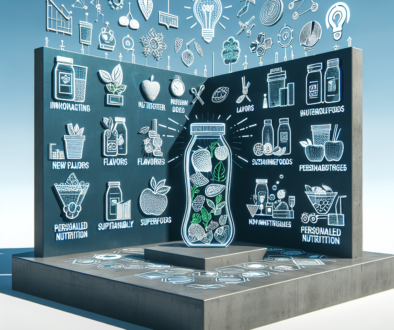Experimental Study On Repairing Sciatic Nerve Defects In Rats With Salidroside/Collagen/Polycaprolactone Nerve Conduit
Keywords
Salidroside, Collagen, Polycaprolactone, Sciatic Nerve, Nerve Defect, Rat
Abstract
Objective To construct a salidroside/collagen/polycaprolactone (PCL) composite nerve conduit scaffold material and bridge it to repair sciatic nerve defects in rats, and to explore its effect in repairing nerve defects. Methods W/O/W method was used to prepare salidroside microspheres, and their sustained release rate was detected; then 10, 20, and 40 ¦Ìg salidroside microspheres were mixed with 1 mL of collagen respectively, and the nerve conduit core was prepared by freezing method. layer; the collagen/PCL nerve conduit shell layer was constructed by electrospinning technology; the core layer and shell layer were cross-linked with genipin to prepare salidroside microsphere/collagen/PCL composite nerve conduit. Scanning electron microscopy observed the structure of the nerve conduit before and after cross-linking. Thirty-eight Wistar rats were randomly divided into 5 groups, including 9 rats in each group A, B, C, and D, and 2 rats in group E. After preparing a 15 mm long sciatic nerve defect model in each group of rats, collagen/PCL composite catheters (group A), 10, 20, and 40 ¦Ìg/mL salidroside/collagen/PCL composite nerve catheters (B, C , Group D) and autologous nerve (Group E) bridge repair. The survival of rats in each group was observed; the sciatic functional index (SFI) was evaluated at 1, 3, and 6 months after surgery; gross observation and nerve electrophysiological testing were performed after 6 months, and the materials were collected for histology and Immunohistochemical staining [S-100 and peripheral myelin protein 0 (P0)] were observed. Results: Salidroside microspheres showed burst release on 3 days, and the sustained release stabilized after 13 days. The cumulative sustained release rate reached 76.59%, and the sustained release was sustained to 16 days. Observation under a scanning electron microscope showed that after the nerve conduit shell was cross-linked, the disorderly arranged fibers became mutually adherent, shrunken, dense, and had gaps; the pores in the core layer were clearly visible before and after cross-linking. There was no postoperative infection or death of rats in each group. At 1, 3, and 6 months after operation, the SFI of group E was significantly higher than that of groups A to D (P<0.05); at 1 month after operation, the SFI of groups B, C, and D was higher than that of group A (P<0.05). There was no statistically significant difference between groups C and D (P>0.05); at 3 months, there was no statistically significant difference between groups A to D (P>0.05); at 6 months, group C was higher than A, B, and Group D (P<0.05), groups A and B were higher than group D (P<0.05), and there was no statistically significant difference between groups A and B (P>0.05). Except for the statistically significant difference in SFI between groups C and E at 1, 3, and 6 months after surgery (P<0.05), there was no statistically significant difference between the other time points in the other groups (P>0.05). Six months after the operation, gross observation showed that the two ends of the catheter stent in groups B and C were well connected and the nerves were thicker, while the proximal connecting nerves in groups A and D were thinner; the materials at both ends of the catheters in each group were significantly degraded. Neuroelectrophysiological testing showed that the latency/conduction velocity of groups C and E was significantly lower than that of groups A, B, and D (P<0.05). There was no statistically significant difference between groups C and E and between groups A, B, and D ( P>0.05). Histological observation showed that the nerve fiber tissue in groups B, C, and E was significantly more than that in groups A and D, and the nerve fiber arrangement in group C was similar to that in group E, and the core material of each catheter group was completely degraded. Immunohistochemistry staining showed that S-100 and P0 protein expression could be seen in each group. The expression levels of groups B, C, and E were higher than those of groups A and D, and they were sequentially enhanced (P<0.05); S in groups A and D There was no statistically significant difference in -100 expression levels (P>0.05), and the P0 expression level in group A was lower than that in group D (P<0.05). Conclusion Salidroside microsphere/collagen/PCL composite nerve conduit can promote the repair and regeneration of sciatic nerve injury in rats. For further information of this article and research, feel free to contact our team for asssitance. Original research was done by Zhang Xiaomin, Li Gen, Wang Wei, Qin Wen, Zhao Hongbin, Wei Yanming
About ETChem
ETChem, a reputable Chinese Collagen factory manufacturer and supplier, is renowned for producing, stocking, exporting, and delivering the highest quality collagens. They include marine collagen, fish collagen, bovine collagen, chicken collagen, type I collagen, type II collagen and type III collagen etc. Their offerings, characterized by a neutral taste, and instant solubility attributes, cater to a diverse range of industries. They serve nutraceutical, pharmaceutical, cosmeceutical, veterinary, as well as food and beverage finished product distributors, traders, and manufacturers across Europe, USA, Canada, Australia, Thailand, Japan, Korea, Brazil, and Chile, among others.
ETChem specialization includes exporting and delivering tailor-made collagen powder and finished collagen nutritional supplements. Their extensive product range covers sectors like Food and Beverage, Sports Nutrition, Weight Management, Dietary Supplements, Health and Wellness Products, ensuring comprehensive solutions to meet all your protein needs.
As a trusted company by leading global food and beverage brands and Fortune 500 companies, ETChem reinforces China’s reputation in the global arena. For more information or to sample their products, please contact them and email karen(at)et-chem.com today.



